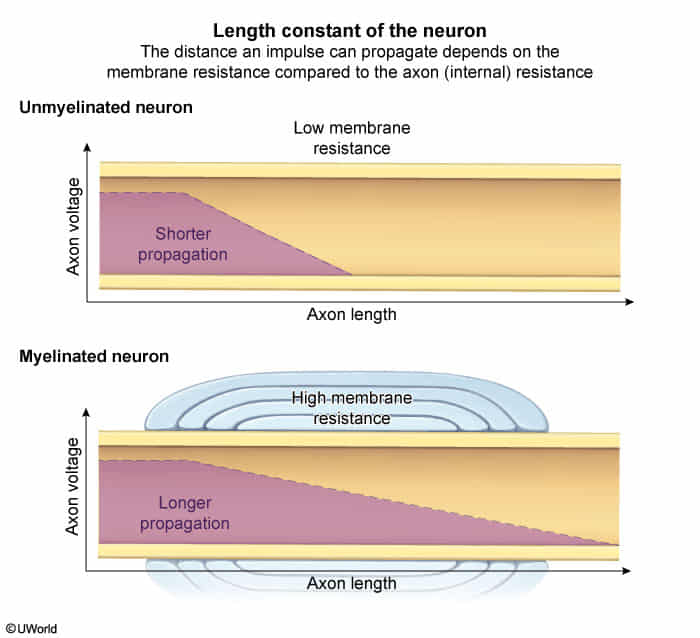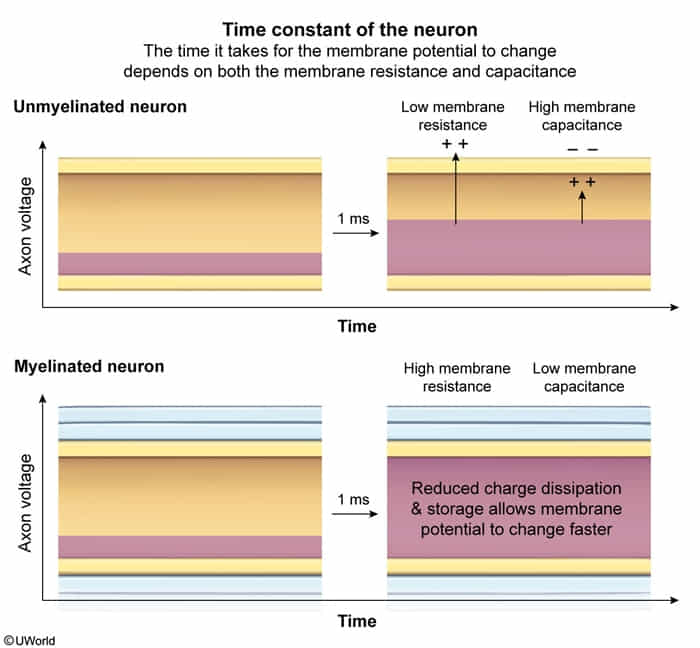-
Axon conduction speed depends on two constants: the length constant (λ) and the time constant (τ).
- Relationship: Velocity ≈ λ / τ (as suggested by “velocity = length/time”, linking these constants).
-
Length Constant (λ):
- Definition: A measure of how far along an axon an electrical impulse can propagate passively (without active regeneration by ion channels).

- Basis: Determined by the relative resistance of conduction along the axon (intracellular, Ri) compared to the resistance across the membrane (membrane, Rm). It’s related to √(Rm/Ri).
- Myelin’s Effect: Increases the length constant.
- Mechanism: Primarily by increasing membrane resistance (Rm), which reduces charge leak/dissipation across the membrane in the myelinated internodes.
- Benefit: Allows the depolarization from one Node of Ranvier to spread farther down the axon to activate the next Node of Ranvier efficiently.
- Demyelination’s Effect: Decreases the length constant.
- Result: Shorter impulse conduction distance, making it harder to reach the threshold at the subsequent node.
- Definition: A measure of how far along an axon an electrical impulse can propagate passively (without active regeneration by ion channels).
-
Time Constant (τ):
- Definition: A measure of the time it takes for the membrane potential to change in response to a change in membrane current or permeability (e.g., Na+ channel activation).

- Basis: Determined by membrane resistance (Rm) and membrane capacitance (Cm). Formula: τ = Rm * Cm.
- Myelin’s Effect (in internodes): Decreases the time constant.
- Mechanism:
- Increases membrane resistance (Rm).
- Decreases membrane capacitance (Cm) - myelin acts as an insulator separating charge farther across the membrane, reducing its ability to store charge in response to voltage change.
- Benefit: Allows the membrane potential to change faster, speeding up the depolarization process at the nodes.
- Mechanism:
- Demyelination’s Effect: Increases the time constant.
- Result: Slower changes in membrane voltage, slowing down the depolarization at affected regions.
- Definition: A measure of the time it takes for the membrane potential to change in response to a change in membrane current or permeability (e.g., Na+ channel activation).